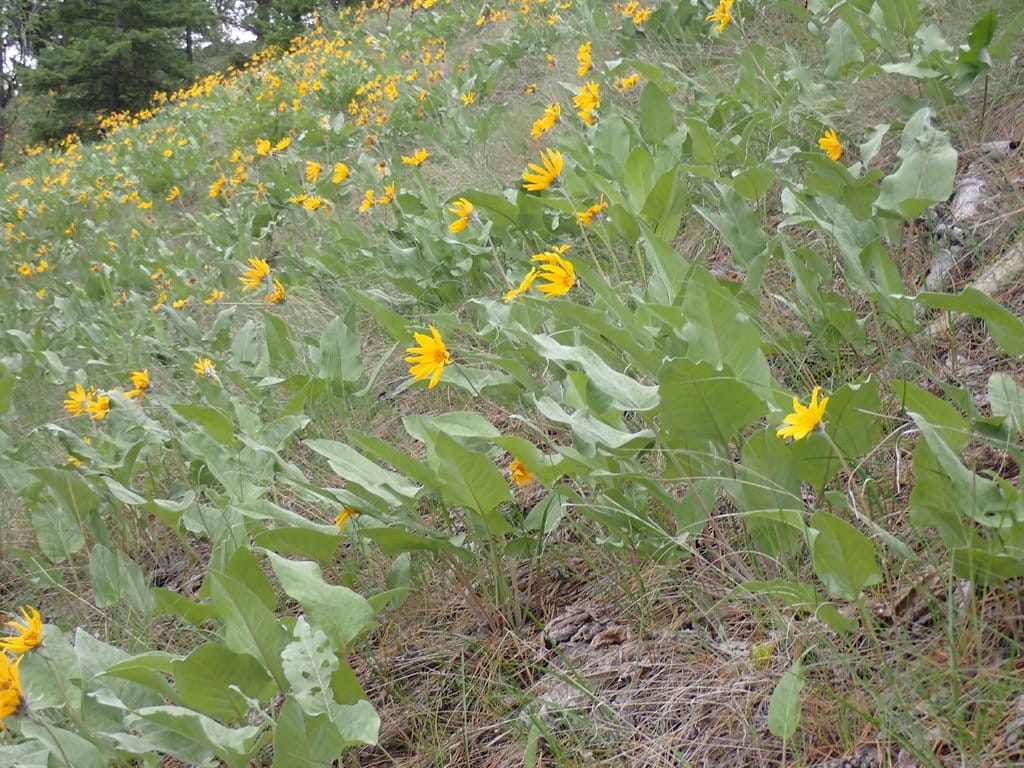By Craig Stephani | September 28, 2023
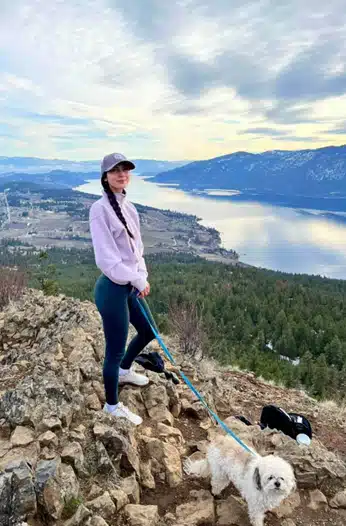
Sage Flett Kruger stands as a bridge between traditional wisdom and modern conservation efforts. As the Indigenous Engagement Manager for the Trails Society of BC and a proud member of the Penticton Indian Band, Sage has not only brought her cultural heritage and passion for the land to the forefront but has also been a dedicated advocate in the fight against invasive species.
Back in May, during Invasive Species Action Month, Sage wrote an article for IndigiNews reflecting on invasive plants and Indigenous solutions to protect the land. After reading the engaging article we wanted to dive deeper to share Sage’s personal journey, her connection to the land, and her involvement in tackling the invasive species challenge. Follow along to learn more about her journey!
Early Encounters with Invasive Species
Sage’s introduction into the world of invasive species began early in her life.
“My dad taught me at a young age to keep my eyes open when we were out on the land, whether it was hunting, fishing, or gathering. He showed me what invasive species were, and it always stuck with me.”
“I remember hearing stories from my dad about how there were not as many bass and carp in the lakes when he was a kid. Now we have issues with carp and bass eating our trout and salmon and even their eggs, which impacts our lakes today.”
In addition to these aquatic invasive species, Sage describes terrestrial invasive species, like Russian thistle and Sulphur cinquefoil, crowding out her family’s fields, emphasizing the urgent need for action.

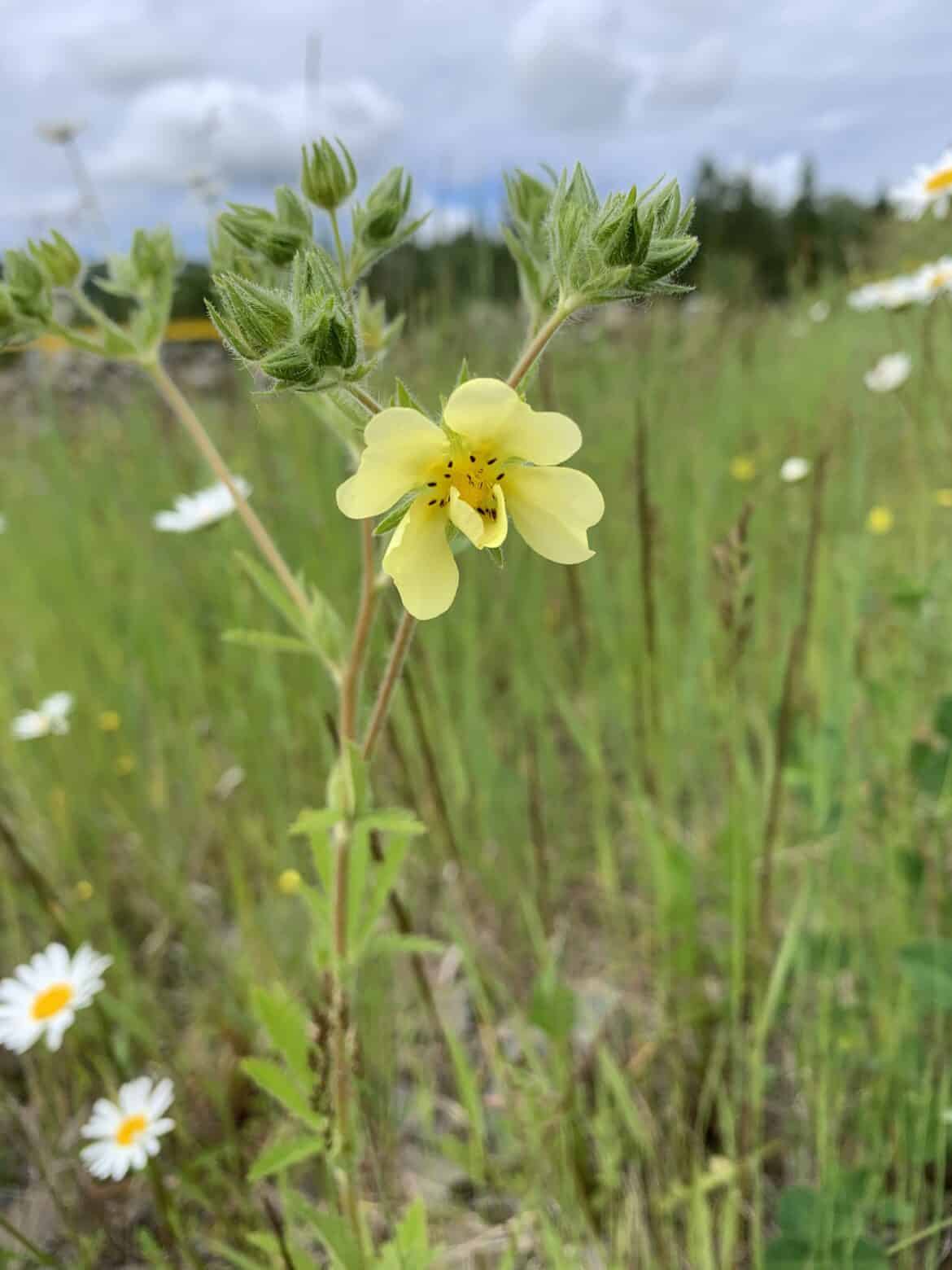
Community Engagement and Restoration
Sage’s commitment to addressing invasive species extends well beyond awareness; she has actively engaged in multiple projects to make a positive, local difference. She has taken part in a community restoration program, replanting native plants such as willow, aspen trees, and rose bushes. She has also been a member of her band’s land stewardship guardian program, where she joined a dedicated crew responsible for manually removing invasive species. This rigorous effort included the careful disposal of these invasive species at designated sites to prevent further dispersal of their seeds on the land.
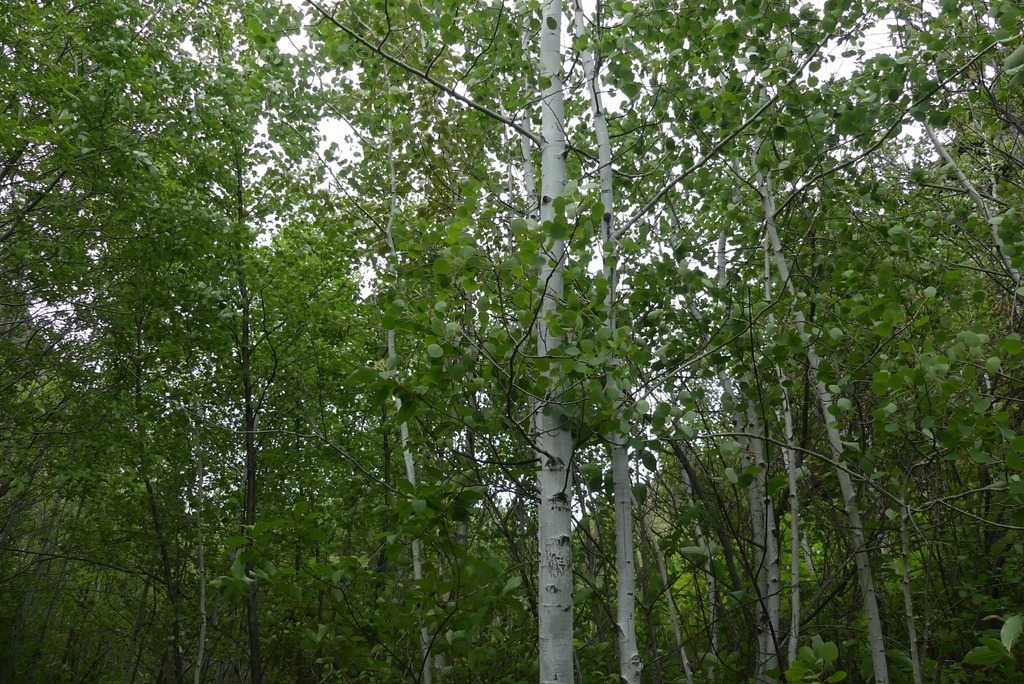
In her role as a forestry technician for her band, Sage has reacquainted herself with the challenges posed by invasive species, gaining a deeper understanding of their far-reaching ecological impacts.
Witnessing the positive outcomes of these restoration programs, as native species thrived and returned to their habitats, is especially gratifying for Sage. Nevertheless, her involvement in these initiatives was not without its own set of challenges.
“A challenge was working with biologists or archaeologists. My experience was that they had a clinical mindset, or book references that made them certain that they were accurate in their thinking. When I tried to share Indigenous knowledge with them they could have learned more if they were open to thinking and learning from our perspective.”
This path toward land stewardship and the management of invasive species reiterates the critical importance of incorporating Indigenous knowledge into ecological restoration efforts. If we collaborate and bring diverse perspectives together, we can collectively strive to bring balance back to the natural world we all share.
Sharing Wisdom: Elders’ Guidance
Sage’s Indigenous heritage deeply influences her perspective on invasive species and their impact on ecosystems and communities.
“When gathering traditional foods or medicines Elders, small children and people with physical disabilities can have more challenges accessing the gathering sites when invasive species encroach these locations. Often these are the groups access gathering sites that are close to old dirt roads where they don’t have to walk from far from a vehicle to harvest. Unfortunately these areas are where prime locations for invasive species can spread.”
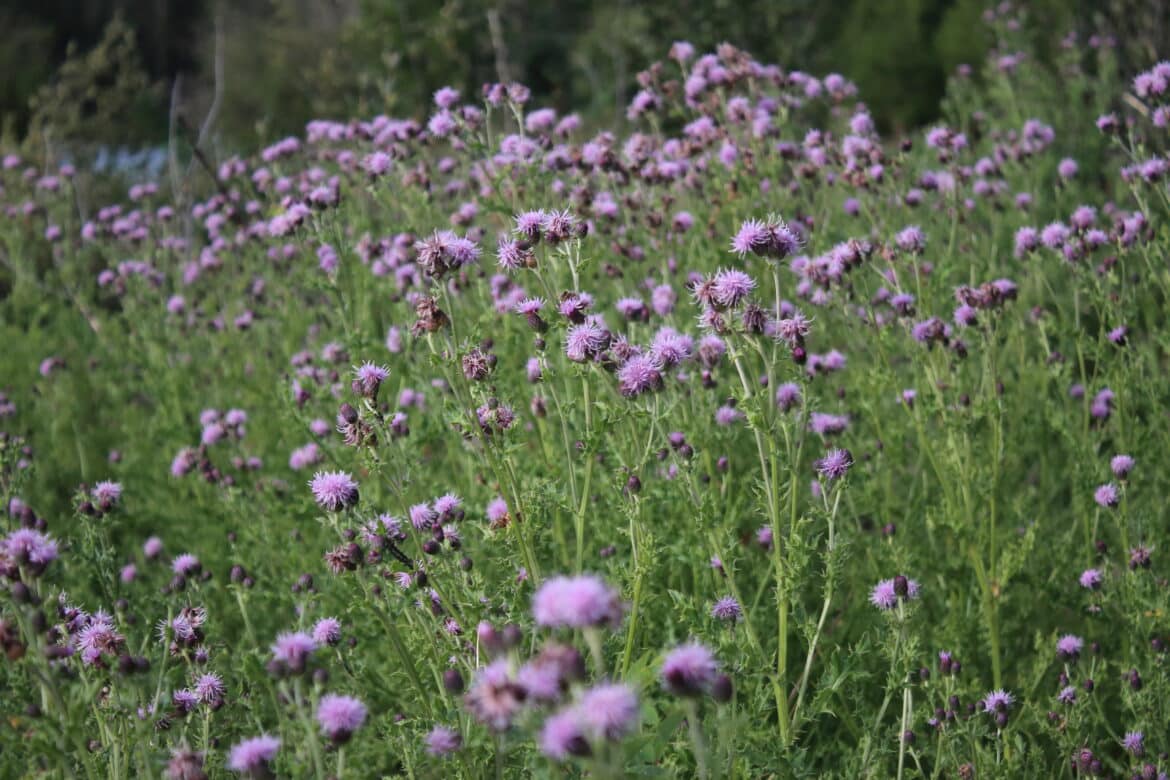
But even in areas affected by invasive species, important knowledge and practices can be shared.
“Elders watch where they are going and if they have any seeds latching onto clothes or shoes. This can be a teaching moment to show the younger children to make sure they don’t transport any unwanted seeds to other locations. Practicing mindfulness of our surroundings and creating awareness and species identification are ways of slowing the spread.”
Elders sharing their knowledge on issues like invasive species prevention, has deeply impacted Sage.
“Having Elders have their voices being heard is so powerful. Our Elders are here to share their knowledge with us. Programs like this ensure that is happening. Making sure we have an opportunity to get out on the land with them and learn from them was a way of life for us, to continue this important transfer of traditional knowledge is core to who we are as people. Having their knowledge help us with management control over invasive species can be crucial for communities.”
Sage’s Guiding Light
“We, as Indigenous people, are the caretakers of Mother Earth. Stewardship is rooted in who we are. Having our people out on the land and making sure the spread of invasive species is reduced gives me hope knowing our traditional medicines, foods and native plants can grow and prosper is a good feeling.”
For those interested in getting involved in restoration or land stewardship in their area, Sage has this advice.
“[Use] online resources and [learn] about the First Nation communities you live by. Each Nation will have their own protocols of stewarding their lands.”
Sage’s journey from childhood learning from her father to her present-day roles in the battle against invasive species demonstrates the power of connecting cultural heritage with environmental stewardship. Her work not only protects the land but also strengthens the bond between Indigenous communities and their ancestral territories. Sage’s message of education, awareness, and respect for Indigenous knowledge guides those looking to follow in her footsteps.
Building Healthy Landscape Together
We invite all Indigenous people, communities, and Indigenous-led organizations to join ISCBC’s Indigenous Invasive Species Network. Together, we can amplify Indigenous voices, share knowledge, and develop innovative solutions to combat invasive species. By working together, we can build and steward healthy landscapes, including habitats and communities, free of invasive species.
Craig is an Outreach Lead at ISCBC. He is passionate about sharing his excitement for nature with others. In his spare time, he enjoys hiking, camping and exploring wild areas near and far. You can reach Craig at cstephani@bcinvasives.ca
Share


